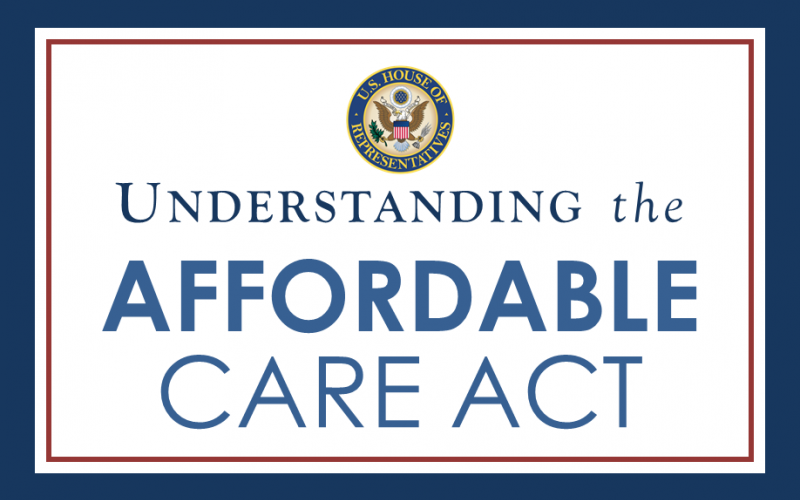ACA Compliance Requirements and Penalties

Although President Trump successfully eliminated the Individual Mandate (one of the significant provisions in the Affordable Care Act) beginning January 2019, other key provisions of the ACA remain intact, including tax penalties for businesses.
Employer Sponsored Health Insurance is NOT Required
To be clear, the Affordable Care Act (ACA), does not require employers to provide health insurance for their employees. However, there can be penalties for businesses with 50 or more full-time or full-time-equivalent employees who don’t offer affordable health insurance coverage to employees. There is NO PENALTY for businesses with under 50 full-time-equivalent employees who do not offer health insurance coverage.
Tax Penalties for Companies Who Don’t Offer “Affordable” Coverage
Since 2016, the law imposes penalties on businesses with 50 full-time or full-time-equivalent employees that do not provide “Affordable” health insurance to employees which meets federal standards for Minimum Value and Minimum Essential Coverage. Here is an overview of the penalties:
- Businesses with more than 50 full time equivalent employees must offer coverage to 95% of their full-time employees. Employers will need to certify on a form that they did not drop employees to avoid providing coverage.
- IRS Section 4980H penalties for an employer with 50 full time equivalent employees that does not offer coverage in 2021 will be $2,700 per full-time equivalent employees, beyond the company’s first 30 workers.
- Additionally, businesses with 50+ full-time workers that do not provide affordable health insurance will be required to pay an assessment for employees who receive federal premium tax credits to buy their own insurance. In 2020, those assessments are calculated at the rate of $4,060 times the number of full time employees who received the tax credit.
- To avoid tax penalties, companies with 50+ full-time workers must provide group health insurance that meets the federal standards for (1) Minimum Value (2) Minimum Essential Coverage and (3) Affordability. Employer coverage is considered affordable, as it relates to eligibility for the Advanced Premium Tax Credit, if the employee only cost of the plan is less than 9.83% of the household income.
- The Affordable Care Act requires that employers with 50 or more workers provide health coverage to workers and dependent children until they reach age 26. However, the law does not require employers to provide health coverage to spouses, whether or not they are eligible for other health insurance.
The Affordable Care Act also requires employers with over 200 full-time employees to automatically enroll new employees who are eligible for the company’s health care plan. An employee must opt out if he or she doesn’t want this coverage.
Calculating Number of Full-time Equivalent Employees
According to a newer IRS ruling, employers need to calculate their employees’ hours of service every month for a minimum 6 month period before January 1st and that a “common law employee” is one that averages 30+ hours of service per week for any given month.” So, the key is if the full-time employees plus the common law employees that average 30+ hours of service per week for any given month is greater or less than 50. For more details on this please see this FAQ from the IRS on calculating the number of full-time equivalent employees or use Healthcare.gov’s FTE calculator.
ACA Notification Requirements for Employers
- Employers are required to provide employees with a standard Summary of Benefits and Coverage (SBC) form explaining what their plan covers and what it costs. You can find the SBC’s for non-grandfathered plans here.
- Employers are required to report the cost of coverage under an employer-sponsored group health plan in box 12 on W-2 forms. Keep in mind that this does not mean that the coverage is taxable. See the IRS documentation for more info.
Employers, HRA’s and Payment of Individual Plan Premiums
2017 guidance confirms that HRAs can be used with individual insurance under ACA requirements.
Under the 21st Century Cures Act, signed into law in 2016, small employers can fund or reimburse for employees’ medical expenses, including coverage on the individual market on a pre-tax basis.
Only small employers with fewer than 50 full-time employees may offer Qualified Small Employer Health Reimbursement Arrangements (QSEHRAs). Small employers who offer QSEHRAs may not offer a group health plan to any of their employees.
Reimbursement payments to employees are capped at $4,950 for individual employees or $10,000 if family members are on the plan and the caps will be indexed annually for inflation.
Small employers must also provide employees with a notice which includes the amount the eligible employee receives in the QSEHRA for the year; a statement that the eligible employee should provide this information to an exchange when applying for advance premium tax credit; and, a statement that if the employee is not covered under minimum essential coverage the employee may be liable for an individual mandate penalty and the QSEHRA amount may be included in the employee’s gross income (and hence taxable).
According to the Department of Labor’s 2017 guidance, the 21st Century Cures Act states that “Qualified Small Employer Health Reimbursement Arrangement” (QSEHRA) is an arrangement offered by an eligible employer that meets the following criteria:
- The arrangement is funded solely by an eligible employer, and no salary reduction contributions may be made under the arrangement
- The arrangement provides, after the employee provides proof of coverage, for the payment to, or reimbursement of, an eligible employee for expenses for medical care (as defined in Code section 213(d)) incurred by the eligible employee or the eligible employee’s family members (as determined under the terms of the arrangement).
- The amount of payments and reimbursements described in (2) for any year do not exceed $4,950 ($10,000 in the case of an arrangement that also provides for payments or reimbursements for family members of the employee) (with amounts to be indexed for increases in cost of living); and the arrangement must be provided on the same terms to all eligible employees of the eligible employer.
The statutory exclusion of QSEHRAs from the group health plan definition is effective for plan years beginning after December 31, 2016.
To be an eligible employer that may offer a QSEHRA, the employer may not be an applicable large employer (ALE) as defined in Code section 4980H(c)(2) (and thus may not be an employer that, generally, employed at least 50 full-time employees, including full-time equivalent employees, in the prior calendar year) and may not offer a group health plan to any of its employees.
There are many additional rules and regulations that must be adhered to. The US Department of Labor’s Compliance Assistance Guide provides a wealth of information for business operators.
Or let us assist your company as your Broker. Get a group health insurance quote and more information about ACA requirements, HRA’s and more.
Learn More About The Affordable Care Act:
- Navigating The ACA
- Are You Eligible for a Subsidy?
- Affordable Care Act 101
- Special Enrollment Periods
- ACA Plan Cost Factors
- ACA Questions & Answers
Was this information helpful? Click the button below to share this on Facebook, Twitter or email.




